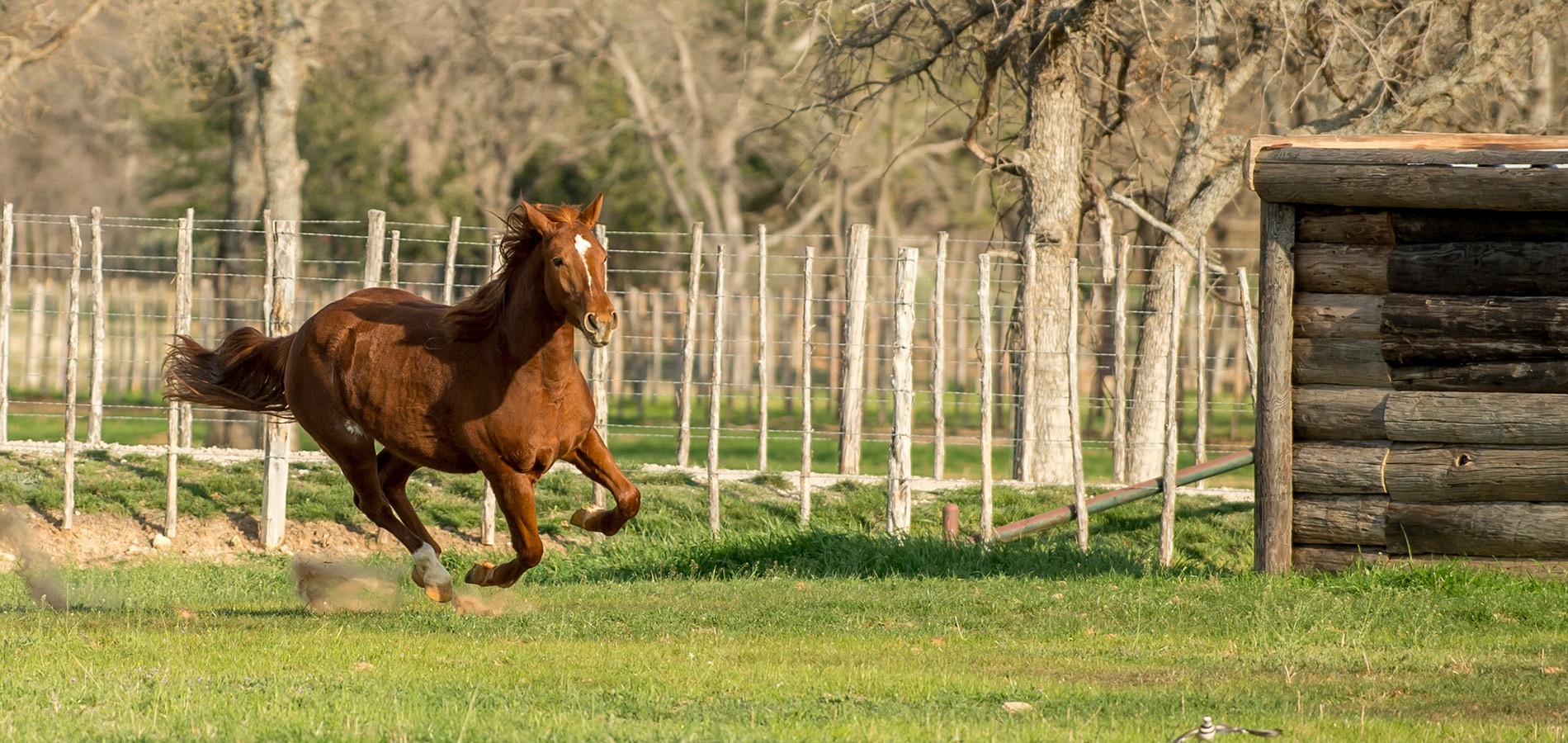New Horse Arrival and Quarantine Procedures for Barn Managers

Arrival
Do not allow any visibly sick horses to enter your property. If a horse arrives looking sick, do not let them off the trailer and send them to a veterinary hospital–preferably one with quarantine facilities. Another option is to keep the horse on the trailer at your farm and have the veterinarian come to the farm to examine the horse. You can bring the new horse directly to your quarantine facilities if you have very secure quarantine facilities on your property, but this increases the risk of pathogens spreading to your farm and horses. Horses moving to your farm should be vaccinated at least with core vaccines, in addition to any risk-based vaccines for your area. Ask for these records just before or at the time of arrival. If a horse is coming from out of state, the state’s animal health official will require a CVI for each new arrival. When the new horse arrives, confirm that the owner has a CVI from within 14 days and review it to make sure it is properly completed. Even if the horse is moving within the state, it is reasonable to require a CVI if there is an ongoing outbreak.
Once new horses arrive, have a barn employee take their temperature a few hours but no more than 6 hours after arrival and continue to do so every 12 hours for the duration of the horse’s quarantine period. Keep a log to track any potential fevers (normal rectal temperature is 99-101.5ºF–check for other clinical signs and recheck temperature in one hour if 101-102ºF). Also, keep track of food and water intake. Consider requiring a temperature log for 2-7 days prior to arrival if there is an active pandemic causing fevers. It is worth noting that temperatures in the evening are typically higher than in the morning.
If the owner of the new horse is a new client at the farm, make sure to explain the biosecurity plan. This will help with compliance by ensuring a better understanding of how and why rules are in place. Include in the boarding contract that the owner is responsible for following all of the farm’s biosecurity protocols. Be open to questions and comments.
Resources
- EDCC What is Biosecurity?
- Maeda Y, Oikawa M. Patterns of rectal temperature and shipping fever incidence in horses transported over long-distances. Front Vet Sci. 2019; 6: 1-10. doi:10.3389/fvets.2019.00027
- Chronicle of the Horse Shipping Fever
- AAEP Signs of a Healthy Horse
- Equine Guelph Biosecurity for Horse Owners (PDF)
- CDFA Biosecurity Toolkit for Equine Events
- Green EA, Hein W, Wickens C, Smarsh DN. Extension Horses, Inc. experts act fast to create online resources to assist the horse industry during COVID-19. Transl Anim Sci. 2020; 4(3). doi:10.1093/tas/txaa085
Horse Arrival Key Points
- Only allow healthy horses onto your property with accurate CVIs.
- Take the new horse’s temperature upon arrival and every 12 hours during quarantine.
- Normal rectal temperature is 99-101.5ºF. Recheck the temperature in one hour if it is 101-102ºF.
- Educate new clients on the farm’s biosecurity plan.
Quarantine
Depending on the perceived risk, the new horse should be quarantined for 7 to 30 days. During this time, the horse should avoid having nose-to-nose contact with other horses and, ideally, should not share air space with them. Do not share equipment between new and resident horses. If possible, assign an employee to feed, water, and clean the new horse’s stall. Otherwise, feed, water, and clean stalls for all resident horses before tending to the new arrival.
Keep a log of temperature checks every 12 hours. Additionally, check the horse once or twice daily to ensure there are no clinical signs of disease. If any signs are present, contact the owner and veterinarian immediately.
Visitors to the barn should not interact with the quarantined horse, and if they do touch him/her, they should wash their hands before touching another horse. A physical barrier, such as mesh over the stall window, and clear signage stating not to touch this horse are some options for preventing visitors from interacting with the quarantined horse. Make every effort to limit contact between the new horse and the resident horses.
Do not allow the newly arrived horse to use facilities (arenas, paddocks, grooming stalls, etc.) while other horses are present. The new horse can use the arena or other areas where they will not be able to touch anything at designated times, such as after hours. Instruct the owner on when she or he can use these areas and how to minimize pathogen transmission, such as disinfecting anything her horse touches.
Once the quarantine period is complete and the horse has shown no clinical signs of illness, he or she can be released into the general resident population.
Resources
Quarantine Key Points
- Quarantine new horses for 7 to 30 days. Prevent direct contact between the quarantined horse and resident horses and people.
- Take the quarantined horse’s temperature every 12 hours and perform health checks for the duration of the quarantine period.
- Work with the horse owner to schedule times for them to exercise their horse when they will not encounter others.
Moving Horse from Quarantine to the General Population
Continue monitoring the horse for clinical signs of disease and temperature for several days after it enters the general population. The horse and owner can begin using the facilities, but with extra care. They should be cleaning and disinfecting anything the horse touches for the first several days.
Moving a Horse from Quarantine Key Points
- Monitor the horse’s temperature and for clinical signs of disease for several days once it is in the general population.
